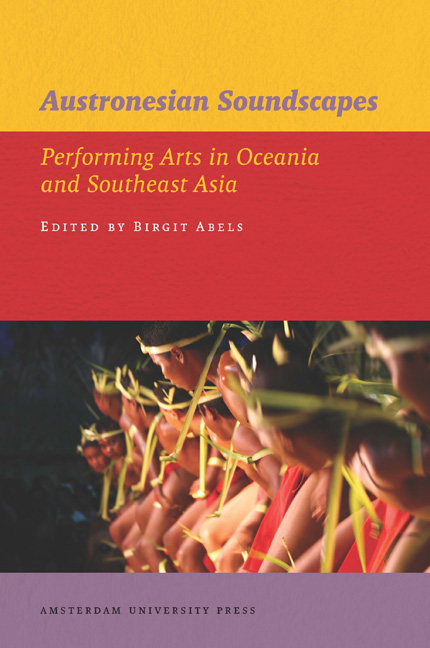9 - Breaking the Tikol? Code-switching, Cassette Culture and a Lihirian Song Form
Published online by Cambridge University Press: 20 January 2021
Summary
Introduction
In New Ireland Province, Papua New Guinea, there is a group of islands known as Lihir, which can be seen on a clear day with the naked eye from the northeast coast of ‘mainland’ New Ireland. The Lihir island group is made up of four islands: Aniolam (by far the biggest in the group), Malie (consisting of the island of Malie plus two smaller islands, Sinambiet and Mando), Masahet and Mahur, in order from south to north.
Lir, or Lihirian as it is known in English, is classified as an Austronesian language. It is spoken throughout the island group, though there is a dialect difference between the large island of Aniolam, where the majority of the population live, and the three other islands (which are referred to locally under the collective name Ihot, meaning ‘stone place’ in Lihirian, as the islands are very rocky). There are currently approximately 14,000 speakers of the Lihirian language (Bainton 2008b: 291), however, Lihirian is not the only language spoken in the island group. There has always been an interaction with neighbouring language groups – Lihir has never been an isolated place, being part of a network of exchange. However, the nature of the interactions with other groups of people has altered over the course of the 20th century, as Lihir has become increasingly engaged in commercial industries, such as copra plantations and, since 1995, gold mining (see, for example, Bainton 2008a; 2008b). The employment of workers from other parts of Papua New Guinea, and beyond, in these industries, has altered how languages are spoken on Lihir. Consequently, this multiplicity of language usage – and the social experience behind this multiplicity – has had an impact on Lihirian song forms.
This paper considers one Lihirian song genre known as tikol, essentially a form of storytelling in song. Performed in their ritual context around the time of the breadfruit season, tikol are identifiable by their textual structure and content. Each tikol is identified as such by the initial singing of the words ‘tikol tikol’ at the beginning of every song of this type. The word ‘tikol’ often also appears as the final word of the song.
- Type
- Chapter
- Information
- Austronesian SoundscapesPerforming Arts in Oceania and Southeast Asia, pp. 193 - 204Publisher: Amsterdam University PressPrint publication year: 2012

